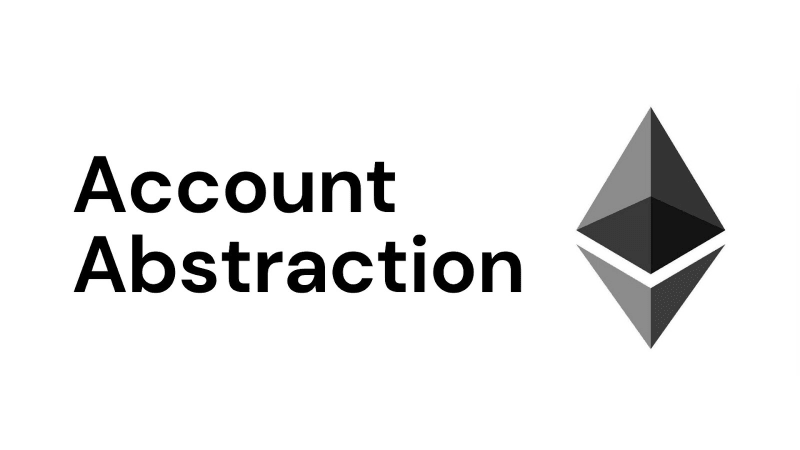Quick note: This article has been written by our Guest Author: Aprit Kumar (Twitter || Linkedin) and we would like to thank him for this.
The journey towards widespread adoption of cryptocurrencies and the web3 world has been met with numerous challenges. One of the biggest obstacles is the lack of user-friendly interfaces and security issues. Account Abstraction is an innovative solution that can revolutionize the way we manage our accounts in Ethereum, making it more accessible and secure for the average user.
Understanding Ethereum Accounts!
Ethereum has two types of accounts: Externally Owned Accounts (EOA) and Contract Accounts.
EOAs are typically used with wallets like MetaMask and Coinbase, while Contract Accounts are associated with smart contracts. EOAs are secured by a private key, which is crucial to prevent unauthorized access. Losing this key means losing access to the account and all its assets.
Introducing Account Abstraction
Account Abstraction is a groundbreaking concept that transforms EOAs into smart contracts, making them programmable by users. This enables transaction authorization without the need for a private key, offering a more streamlined and secure experience.
Some of the key benefits of Account Abstraction include:
- Enhanced security with multiple signers
- Batch transactions for approving and transferring tokens
- Recovery of funds without private keys
- Temporary halt of fund transfers during recovery efforts
- Paying gas fees in any token and allowing projects to cover costs for users
- Plug-ins for increased flexibility and modularity
Steps Involved in Account Abstraction Implementation
Account Abstraction’s implementation can be quite complex, but let’s break it down into simpler steps to understand how it works. The process involves transforming an EOA into a smart contract, enabling users to program custom transaction authorization rules and features.
Step 1: Deploying a Smart Contract Wallet
To start, a user deploys a smart contract wallet. This wallet acts as a proxy between the user and the Ethereum network. Unlike an EOA, this wallet can contain custom logic and rules for transaction authorization, effectively abstracting the account.
Step 2: Defining Custom Rules and Features
Once the smart contract wallet is deployed, the user can define custom rules and features for their account. This includes multiple signers for enhanced security, social recovery methods, and more. The smart contract code will determine how transactions are authorized and executed based on these rules.
Step 3: Interacting with the Ethereum Network
When the user wants to interact with the Ethereum network, they initiate a transaction through their smart contract wallet. The wallet processes the transaction, applying the custom logic and rules defined by the user. If the transaction meets the necessary criteria, it is authorized and sent to the network.
Step 4: Paying Gas Fees
With Account Abstraction, users can pay gas fees in any token, not just ETH. This is achieved by implementing a mechanism within the smart contract wallet that converts the desired token to ETH to cover the gas fee. Additionally, projects can choose to cover the gas fees on behalf of their users, further simplifying the user experience.
Step 5: Adding and Removing Features
Account Abstraction allows users to add or remove features from their smart contract wallet as needed. For example, they can integrate plug-ins developed by third parties, essentially creating an app store for their account. This modularity ensures that users have access to the latest features and can customize their account as desired.
Challenges in Implementation
Implementing Account Abstraction on Ethereum Layer 1 is challenging due to compatibility issues with the current ecosystem built around EOAs. As a result, most Dapps are not compatible with smart contract wallets. However, Layer 2 solutions like StarkNet are working to incorporate Account Abstraction in their ecosystem to overcome these challenges and bring the benefits of Account Abstraction to a wider audience.
This is the best collection of resources on Account Abstraction from understanding to implementation with latest discussions on the topic.
The Future of Account Abstraction
The implementation of Account Abstraction can significantly enhance the web3 experience, making it more accessible for the average user. With better user experience, mass adoption of web3 and cryptocurrencies becomes more attainable. As Layer 2 solutions continue to develop, we can expect to see Account Abstraction playing a crucial role in the future of the web3 ecosystem.
And please give us a clap 👏 if you like our work and please do share this article.
Thank you.
About BuildBear:
BuildBear is a platform for testing dApps at scale, for teams. It provides users with their own private Testnet to test their smart contracts and dApps, which can be forked from any EVM chain. It also provides a Faucet, Explorer, and RPC for testing purposes.
BuildBear aims to build an ecosystem of tools for testing dApps at scale for the teams.
If you appreciate what we are doing, please follow us on Twitter, and LinkedIn and Join the Telegram group if you haven’t done yet.
We would like to thank our Guest Author: Aprit Kumar (Twitter || Linkedin)









Top comments (0)